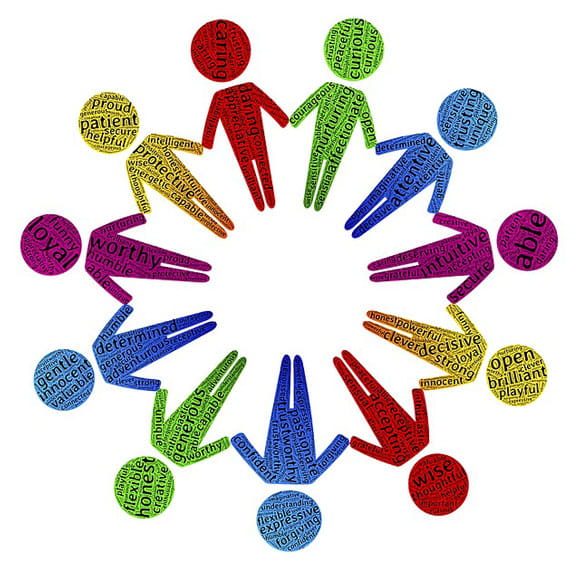Winning through others’ Negotiating Social Styles

Enhance your counterpart negotiation styles, and learn how to handle different negotiation counterpart styles.
Successful negotiators have a positive vision of their success. They fully understand their subject matter and have a firm grasp of the negotiation process. In addition, they can also read people very well. Accomplished negotiators know not only their own personal negotiation style, but also their counterpart’s preferred negotiation style – sand they use this knowledge to build a stronger relationship that will help achieve their goals.
Most people undervalue the impact of social styles on a negotiation. Many negotiators use the same approach in every negotiation and are surprised when they do not obtain consistent results. But an approach that works well for one counterpart’s negotiating style can actually create a deadlock with a counterpart who has an different style. Everyone is dissimilar and every negotiation is different. People, who understand these differences and change their approach to negotiations, practice what we call “The Platinum Rule of Negotiation,” which is “Do unto others as they want to be done unto.” In other words, successful negotiators tailor their approach to the negotiation social style and needs of their counterparts.
Being able to identify a counterpart’s preferred style and alter your own style accordingly can be incredibly helpful in developing productive relationships. With that concept in mind, let’s review the characteristics that will help you identify your counterpart’s preferred style, and ponder some tips to building relationships that lead to win-win outcomes.
First, we will discuss Amiable’s. Negotiators who use the Amiable style have a powerful need to be recognised and valued in the collaboration of a negotiating partnership. Because they have a strong concern for relationships, they tend to concentrate more on feelings and less on facts. They will frequently start a negotiation with social conversation that is immaterial to the negotiation. They are trusting, optimistic, and generally committed to outcomes that benefit both parties.
To develop rapport with your Amiable counterpart, display genuine respect and care. Be sincere, and don’t disregard personal feelings. Stay positive and solution oriented. Do not go “head to head” in a challenging manner, which will most likely cause the Amiable to retreat and end the negotiation. Negotiate in a manner that builds trust and understand that for your Amiable counterpart, negotiation is more than just business, it is personal. Never tell an Amiable, “Don’t take it personally.”
Another style that you may encounter when negotiating is the Driver. Drivers and Amiable’s are often noted to be at polarised ends of the negotiation social style continuum. While Amiable’s are focused on the relationship with their counterpart, while Drivers are results-oriented and focused primarily on the bottom line. Drivers have a strong concern for outcomes and when callously pursuing their goal, may become shark like. They tend to be impatient, have little regard for detailed information, and want to move the negotiation to closure quickly. Drivers are self-confident, assertive, and when feeling cornered, may become aggressive in their tactics. While both the Amiable and the Driver have a need to attain a positive outcome, for the Driver, winning is the most important.
Preparation is vital when negotiating with a skilled negotiation Driver. Be clear about your bottom line. Be ready and keep your interactions focused on business. This will help you remain assertive, direct, focused and concise. We are fond of saying, “You can tell a Driver, but you can’t tell them much, so don’t try.” Instead, ask questions that allow Drivers to find solutions and suggest acceptable alternatives. Understand that when negotiating with a Driver, however ruthless your counterpart becomes, it’s not personal, just business from the Driver’s viewpoint.
If your negotiating counterpart appears cautious and reserved, he or she may be using the Analytical style. True Analytical’s methodically examine all options, leaving no stone unturned in their search for a fair and economical outcome. Analytical’s have a powerful need for facts and details, and won’t move forward unless they have had the opportunity to cautiously analyze all available data. They tend to process information slowly and may be somewhat withdrawn or unemotional during the negotiation. They are organised, systematic and approach the negotiation methodically, one step at a time.
To build negotiation rapport and gain respect from your Analytical counterpart, do your homework before the negotiation starts. Ensure that your research is complete and accurate. Keep your discussions factual and business related. Be honest, ethical and demonstrate means in which outcomes will be advantageous in terms of money, time, or resources conserved. Lastly, be patient and respect the Analytical’s requirement to process information methodically.
The last style we will discuss is the Blend. Blends are individuals who have no obvious preference for one style, but use a combination of styles. Blends are personable, social and often have a sense of humor. They are flexible, creative and open to change. They are big picture thinkers and usually have little need for details.
To build rapport with Blends, take the time to start the negotiation on a social note. Be creative in your solutions and focus on coming up with a mix of viable options. When you reach agreement on details, make sure that the deal points are clarified and specific before completing the negotiation.
Establishing Your Counterpart’s Social Style
Now that you have a general understanding of the diverse styles counterparts may employ when negotiating, you may be wondering how to recognize your counterpart’s specific style. There are three main ways: (1) general observation, (2) listening and (3) asking questions.
General Observation
You will get your first clues about your counterpart’s style through general observation. When you enter your counterpart’s office, check out the surroundings. The types of things that are displayed on the walls or desk can provide insight into what your counterpart feels considers important. Are family pictures or company photos displayed, suggesting that relationships are important? If so, you may be negotiating with an Amiable or a Blend. Are the walls covered with plaques and certificates noting achievements and that reveal a pride in accomplishment? This may suggest that your counterpart is a Driver. Is the office neat and organised, or are stacks of files and papers lying around? The neater and more organised the office is, the greater the likelihood that you are negotiating with an Analytical. It is important to note that you cannot determine your counterpart’s style by observation alone, but you can certainly gain some initial insights.
Listening
A second tool for helping you identify your counterpart’s style is by listening. For example, when an employee greets her company’s management team and says she would prefer to retire within one year. The manager who is a Driver asks, “What is the specific date you would like to retire?” Another manager, an Amiable, asks, “Is there anything we can do to create an environment that would make you want to stay longer?” A third manager, who is a Blend, comments, “Great! Another reason to bring the team together for a happy hour!” And a fourth manager, an Analytical, states, “For the next year, we would like you to write down in detail what you do on a daily basis so we will have a step-by-step manual to train your replacement.’
Asking Questions
A third way to clarify your counterpart’s social style is by asking questions and listening carefully to the replies. For example, to determine if your counterpart is a Driver or an Analytical, you could ask, “We have a 60-page document that supports our position. Would you like me to review the complete document with you, or would you prefer to see the two-page summary?” An Analytical will almost invariably want to review the entire document, while a Driver will usually want to see the two-page summary.
Other helpful questions to help you determine your negotiating counterpart’s style could entail, “How are you doing today?” or “How was your weekend?” In response, Amiable’s. will typically provide a lot of information, much of it personal. In fact, Amiable’s will often provide far more information than Drivers or Analytical’s want to know! Drivers responding to the same type of questions will simply respond “Fine,” and quickly change the topic to the business at hand.
Applying Your Knowledge of Social Styles
The ability to identify, understand and respect your counterparts’ negotiating styles, and adapt your style accordingly, can help you to build productive relationships that lead to win-win outcomes. Remembering the Platinum Rule of Negotiation, “Do unto others as they want to be done unto,” will serve you well in every negotiation in which you participate.
Peter Barron Stark and Jane Flaherty are co-authors of The Only Negotiating Guide You’ll Ever Need.
YOU MAY ALSO LIKE








Thank you, Thank you, Thank you!
I am a primary school teacher and your article actually relates to issues that confront the kids who can’t seem to make friends. Great tips to pass onto those kids.
Great article, very informative, but I always thought the last group was Expressive? Can you still have this group and "Blends" as well? I would appreictae your thoughts
Good points.
Appreciate your application of this styles model to the negotiation process. Nice summary of styles and suggestions for preparing and responding to them. I am designing an in-house negotiation skills course and will introduce various styles and approaches. Our work is based on the SYNTAX, behavioral structure, of effective communication. See more at SyntaxCommunication.com if interested. Thanks.
I am in my last class to finish my Business Management degree. This article really helped in this negotiation class. I was able to discuss it at class and use it in my assignments. Thanks.